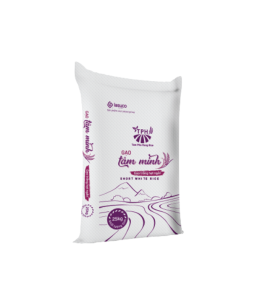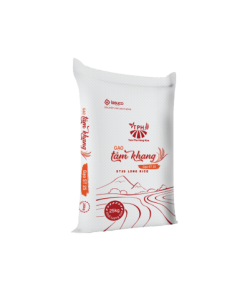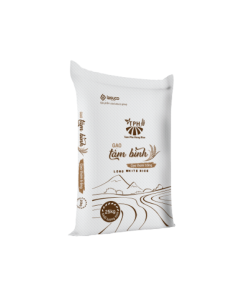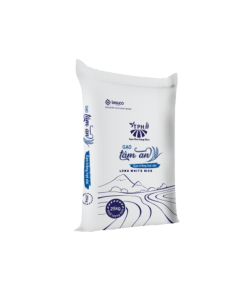Japanese Japonica Rice
$0.00
Japanese Japonica Rice is the quintessence from the land of the rising sun, it fully converges 3 factors: color – taste – flavor with perfect quality.
Japonica rice grains are round like cherry blossom petals, each grain is firm and even. When being cooked, it is soft, fragrant and especially rich in nutrients. Japonica rice is often used by Japanese to prepare traditional dishes such as: Sushi, kimbap, Onigiri rice balls or to cook porridge for children.
Introduction of Japonica Rice
Japanese Japonica Rice is the quintessence from the land of the rising sun, it fully converges 3 factors: color – taste – flavor with perfect quality.
Japonica rice grains are round like cherry blossom petals, each grain is firm and even. When being cooked, it is soft, fragrant and especially rich in nutrients. Japonica rice is often used by Japanese to prepare traditional dishes such as: Sushi, kimbap, Onigiri rice balls or to cook porridge for children.
Criteria:
Shape: Short white rice
Moisture: ≤ 14%
Foreign matter: ≤ 0.05%
Average grain size: 5-5.5 mm
Milling degree: Well milled, double polished
Shelf life: 18 months
Certification
With the determination to bring Tam Phu Hung rice products to the worldwide markets, bringing consumers the most delicious, clean, and quality products, Tam Phu Hung has been certified by a reputable unit:
– HACCP (Hazard Analysis and Critical Control Point System)
– ISO 9001:2015 certification
Characteristics of Japonica rice
Japonica rice is produced from Japanese rice varieties with high resistance to pests and diseases, so there is almost no need to use pesticides or pesticides in the growing process. Therefore, this type of rice is very trusted by people because of its safety, ensuring the residue of pesticide ingredients in the product.
Premium brand rice Taiyo is a product from Japonica rice that also carries those characteristics. Taiyo rice grains are round, white, shiny, and have a natural fragrance from the rice grains. Rice grains are regular, less likely to be chipped and it is important to cook Japanese food properly. This type of rice is indispensable. As a delicious sticky rice, when cooked or processed, Japonica rice has a fragrant, delicious taste, even when cooled, it still retains its original flavor.
Uses of Japonica rice
Japanese rice has many good uses for consumers’ health, it can satisfy even fastidious customers whether men or women, the elderly, children,…
Japonica rice is rich in antioxidants and healthy minerals such as manesium, selenium,… These minerals have the effect of regenerating protein and starch energy. Balance blood sugar, increase resistance. Therefore, this type of rice is very good for patients with liver disease, asthma, low blood pressure and heart-related diseases.
Japonica rice processing
To process this type of rice, you always remember one important thing that before cooking, you should soak the rice for 20-30 minutes to let the water soak into the rice, which will make the rice grains soft and flexible, and cook faster when cooking.
There are many dishes made from Taiyo rice to enrich the meal, such as rice balls, sushi, rice cakes, mixed rice,…
Hopefully with the above basics, you will have a delicious and safe meal with your family from Japonica
Related products
Rice - Organically Grown
Tam Khang rice has long been famous as a specially delicious rice, always be the preferred choice for each quality meal. When being cooked, Tam Khang rice has a characteristic mild aroma. Each rice grain is fragrant, the more you chew, the more you feel the natural sweetness which has conquered many fastidious customers right from the first time.
Rice - Organically Grown
Tam Binh Rice is specialty rice carefully selected each grain to ensure that each product reaches customers with excellent quality. With a light aroma, soft suppleness, natural sweetness, Tam Binh Rice not only brings a delicious meal but also a precious gift that anyone wants to give to their beloved. Tam Binh Rice grains are as clear as sparkling crystals, it's oriented to supply to the system of restaurants, hotels, agents, supermarkets...
Rice - Organically Grown
Tam Minh Rice is selected from the most delicious and high quality rice grains which is a precious gift from nature to every family. Each grain of rice is round and firm, white like a pearl of heaven and earth. Tam Minh Rice is oriented to supply to the vermicelli, vermicelli, cake factories,...
Rice - Organically Grown
Tam An rice is planted from the heart and enthusiasm with the desire to bring warmth and peace of mind to customers. The rice varieties are carefully selected by Tam Phu Hung from the raw material area and organically oriented farming method. Tam An rice is the perfect choice for the industrial kitchen system.










